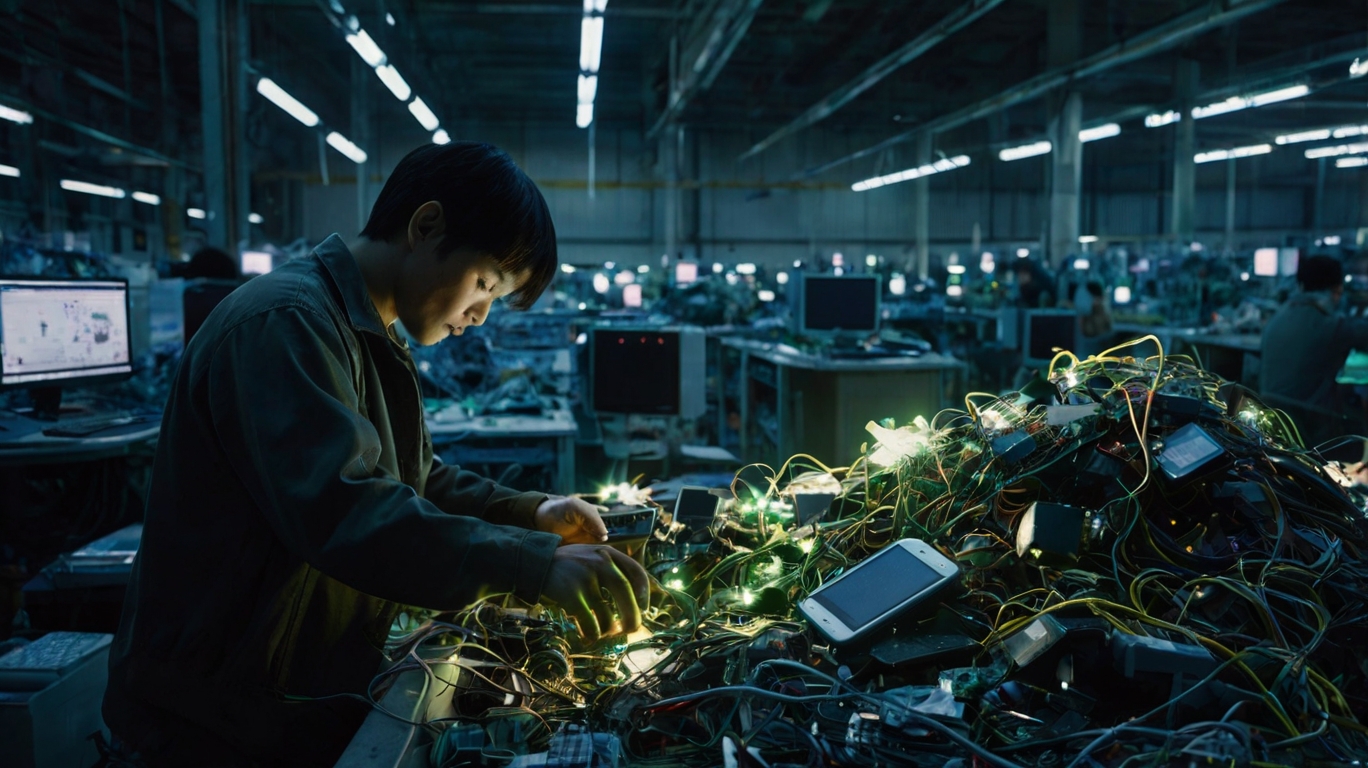Every year, the world throws away millions of tons of electronic waste, or e-waste. From old smartphones and laptops to broken headphones and outdated TVs, this growing mountain of discarded tech has become one of the biggest environmental challenges of our time.
As technology advances rapidly and people upgrade their devices more often, the pile of e-waste grows faster than ever. But there’s good news: many tech companies are finally stepping up to address the problem. In this article, we’ll break down what e-waste is, why it matters, and how companies are helping solve the crisis.
What Is E-Waste and Why Is It a Problem?
E-waste includes any discarded electronic devices or components, such as:
-
Phones
-
Computers
-
Tablets
-
TVs
-
Chargers and cables
-
Batteries
The problem is, most of this waste ends up in landfills, where toxic materials like lead, mercury, and cadmium can leak into the soil and water. These substances are dangerous to both the environment and human health.
Another issue is that valuable materials like gold, silver, copper, and rare earth metals are often thrown away instead of being recovered and reused. This leads to unnecessary mining and waste of natural resources.
How Big Is the E-Waste Problem?
According to the United Nations, the world generated over 50 million metric tons of e-waste in a single year—and only about 20% of it is recycled properly. That means 80% is either dumped, burned, or stored unsafely.
With more people around the world gaining access to electronics and upgrading frequently, this problem is expected to get worse unless action is taken.
How Tech Companies Are Taking Action
Fortunately, many leading tech companies have started to recognize their role in the e-waste crisis and are launching programs to reduce their impact.
1. Device Recycling Programs
Companies like Apple, Samsung, Dell, and HP offer take-back and recycling programs. Consumers can return old devices to stores or mail them in. These devices are then disassembled, and valuable materials are recovered.
-
Apple’s “Trade In” program gives users credit for returning used iPhones, iPads, and Macs.
-
Dell Reconnect, in partnership with Goodwill, allows people to drop off old electronics for free recycling.
2. Using Recycled Materials
Some tech companies are designing new devices using recycled metals and plastics. For example:
-
Apple uses recycled aluminum in many of its new MacBooks and iPads.
-
Microsoft’s Surface products now include recycled ocean plastics and aluminum.
-
HP has created laptop parts using recycled printer cartridges and plastics from used devices.
This helps reduce the need to mine new resources and lowers the overall environmental footprint.
3. Building More Repairable Devices
Another key part of reducing e-waste is making devices easier to repair instead of replace.
-
Framework, a newer laptop company, builds computers that can be easily opened and repaired with common tools.
-
Fairphone, based in Europe, sells smartphones made with modular parts that users can swap out themselves.
-
Even big players like Samsung and Google are starting to offer more self-repair kits and longer software support.
These efforts encourage people to keep their devices longer, which greatly reduces waste.
4. Extending Product Lifespan
Companies are starting to offer longer software updates for older devices. For example:
-
Google Pixel phones now get up to 7 years of updates.
-
Apple supports iPhones with software for 5–6 years or more.
Longer support helps consumers avoid upgrading too often and keeps devices working well for years.
What You Can Do to Help
Even as companies make progress, individuals also play a big role in fighting the e-waste crisis. Here’s how you can help:
-
Recycle responsibly: Use certified e-waste drop-off sites or manufacturer programs.
-
Donate or sell: If your old device still works, give it a second life.
-
Buy refurbished: Consider certified pre-owned devices instead of new ones.
-
Repair, don’t replace: Fix broken screens, batteries, or parts when possible.
-
Think before you upgrade: Do you really need the latest version every year?
The Road Ahead
E-waste won’t disappear overnight, but progress is being made. With growing awareness and action from both consumers and tech giants, the industry is slowly shifting toward a more sustainable future.
It’s encouraging to see that companies are designing with repairability, recycling, and responsibility in mind. As new regulations emerge and public pressure increases, we can expect more innovation and accountability in how tech is made—and what happens when we’re done with it.
By choosing to support sustainable practices and make thoughtful tech decisions, we can all play a part in reducing e-waste and protecting our planet.





